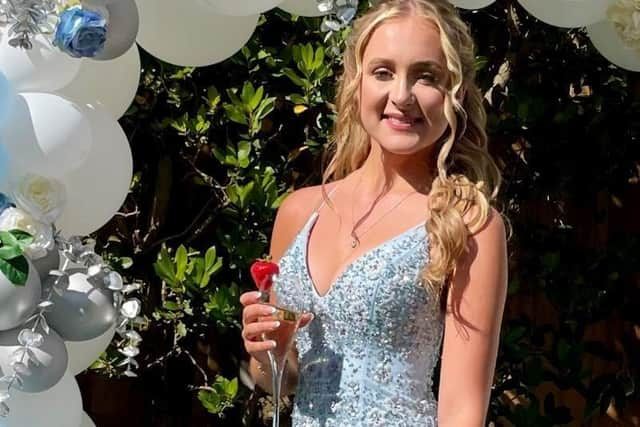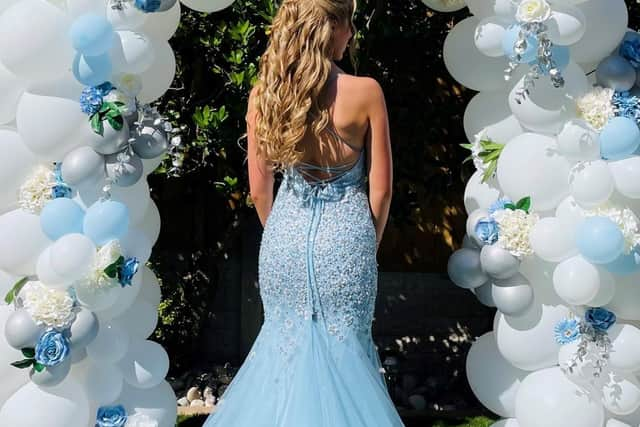Teen who feared she would never wear prom dress has finally worn gown - after spending three years in a back brace
Olivia Sheldon, now 16, was diagnosed with scoliosis at the age of 13, after a dressmaker and retired nurse spotted a curve in her spine at a dress fitting. Her mum Nicola took her to get a custom made figure skating dress as a Christmas present, after she couldn't find any dresses that fitted.
Fiona, the dressmaker, noticed that Olivia's spine curved to the side and she could have scoliosis - which is why they couldn't find a dress that fitted. After going to her GP, Olivia was then referred to Sheffield Children's Hospital in South Yorks,. where she was later diagnosed with adolescent idiopathic scoliosis. Scoliosis is a condition where the spine curves to the side and twists.
Advertisement
Hide AdAdvertisement
Hide AdIt can appear a several ways - a visibly curved spine to one shoulder, a hip sticking out, uneven shoulders or the ribs sticking out on one side.


Olivia was later prescribed a back brace, that she had to wear for around 23 hours a day in order to help straighten her back. And in May 2022, after three years of wearing the brace, she was allowed to take it off as her spine was perfectly straight - just in time for prom.
Nicola said: "Prom was an incredibly emotional day. When Olivia tried the prom dress on in the shop, her spine looked perfectly straight. Olivia had achieved what she wanted to achieve, and as her mum, it was brilliant to see.
"It's been a tough few years, but Olivia has had that inner strength and she has been given the superb care to achieve the best outcome. The team at Sheffield Children's have been absolutely incredible. They are 100% committed to making the best outcome for patients.
Advertisement
Hide AdAdvertisement
Hide Ad"Mr Breakwell is wonderful and has a great demeanour with young people. Orthotists Andrew and Matthew had such a thorough approach, and they made Olivia feel like she could be herself by joking around with her and listening to her. This has all been part and parcel of keeping her motivated - having such motivated staff who are solution-focused.


"Our main focus was to try and avoid Olivia needing invasive surgery so she could continue as a figure skater, limit time away from school but most importantly to have the best possible outcome long term.
"Olivia was really disciplined and committed to wearing the brace. As a family we are incredibly proud of her. She was motivated by having this vision in the future - wearing her prom dress."
During her treatment, Olivia continued to attend dance, gymnastics and figure skating classes and became a scoliosis ambassador for the hospital.
Nicola said: "Soon after Olivia's diagnosis, she became very aware of how difficult it can be for teenagers to wear the brace for such a long time, how frustrating it can be to choose clothes and how it can make you feel self-conscious.
"Olivia met many other teenagers in clinic and closer to home. She shared her motivation and positive mindset and listened to their thoughts, offering reassurance. She became a scoliosis advocate for Sheffield Children's, volunteering her support to other young people with the same condition for almost three years."
Advertisement
Hide AdAdvertisement
Hide AdLee Breakwell, a consultant spinal surgeon at the hospital said: "Olivia's commitment and outcome of wearing the brace was excellent. As a result, she now has near perfect posture and an extremely low risk of her spinal curve progressing as an adult.